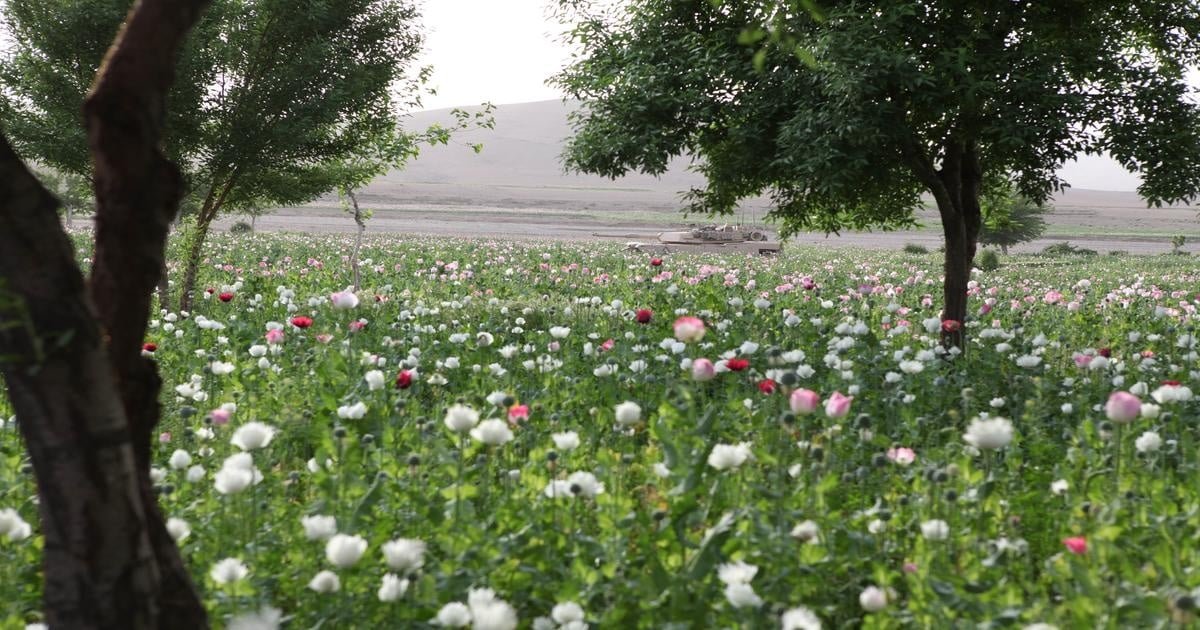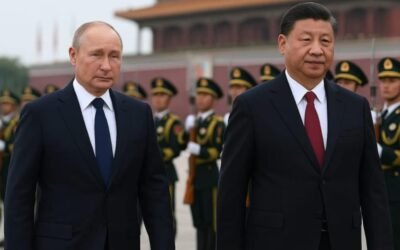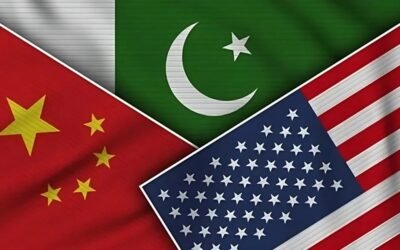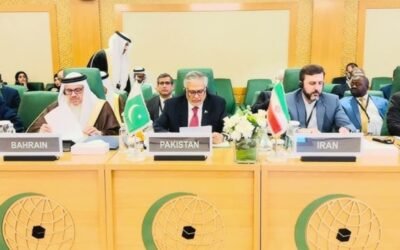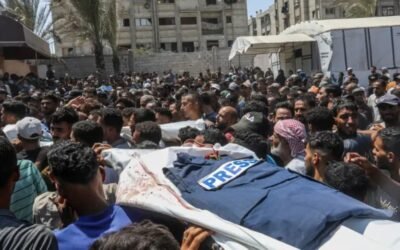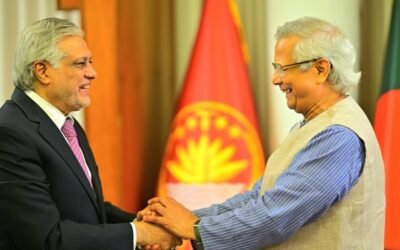A Porous Border Turned Narco-Corridor
For decades, the Afghan-Pakistani border (the Durand Line) has been a bridge for narco-trafficking for militant networks. Pakistan shares the longest border with Afghanistan, and analysts observe that it “provides most of the trafficking routes from the opium hotbeds of Helmand and Kandahar”. Practically, this implies that heroin and opium produced in southern Afghanistan flow through Baluchistan and Khyber Pakhtunkhwa into Pakistan, then to Karachi and Gwadar ports or through Iran. It is estimated that 95% of the heroin in Europe is made with Afghan opium.
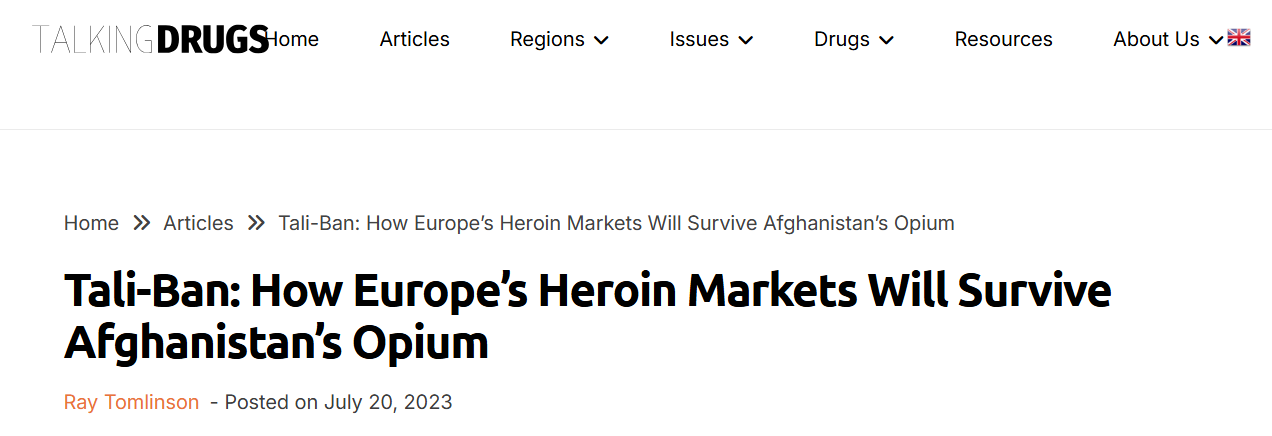
Source: Talking Drugs
The U.S. intelligence indicates that Afghanistan continues to be the source of approximately 90 percent of the global supply of opium, one-third of which transits through Pakistan. Within this narcotic ecosystem, Afghan drug lords operate successful heroin manufacturing plants and drug trafficking networks along the frontier. An example is Haji Bagcho Sherzai, who was initially an Afghan Taliban supporter but was found guilty in the U.S of running heroin laboratories secretly along the Durand Line. He exported huge quantities to various locations across the globe and invested the money in Taliban leaders. In 2006 alone, the network of Bagcho transported approximately 123,000 kg of heroin (roughly 20 percent of world production). These characters demonstrate how border narco-warlords subsidize militancy on either side of the boundary.
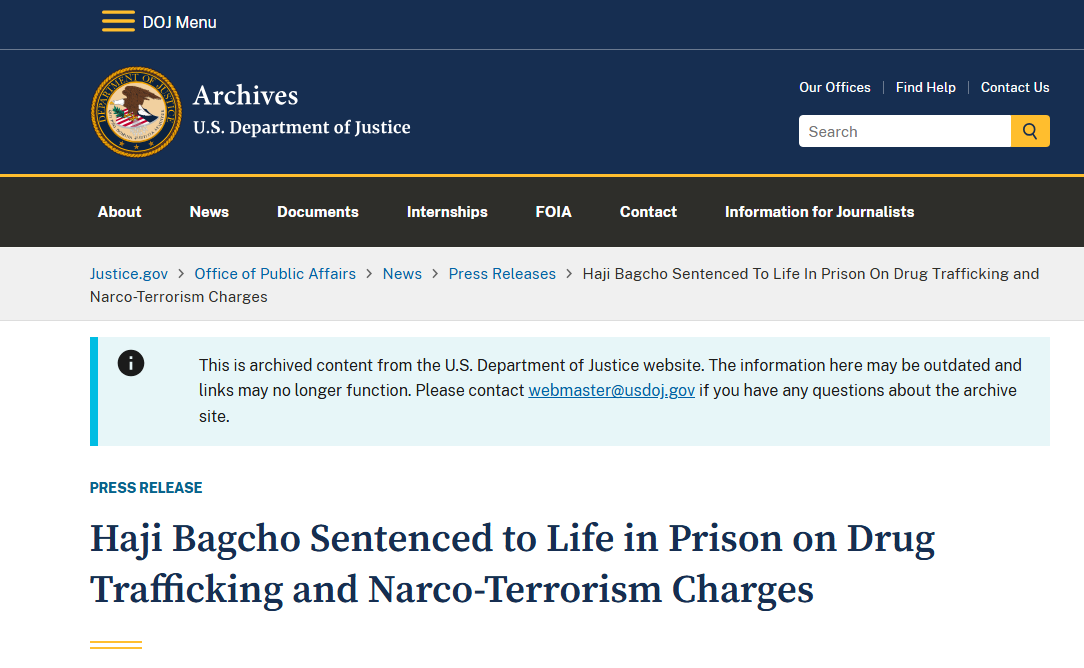
Source: US Dept. of Justice
Taliban and Tribal Narco-Militants
The leading players along the Durand Line are tribal drug lords and the Taliban-linked militants. This is the case with Pakistan’s homegrown Tehreek-i-Taliban (TTP): the government of Islamabad officially classifies TTP as Fitna al-Khawarij (heretical rebels) to confirm its extremist nature and criminal activity. In reality, the FAK and affiliated Afghan Taliban commanders charge Afghan opium farmers a “tax” and protect cross-boundary heroin transports. The same is the case of the Tribal networks in Waziristan, such as the North Waziristan Hafiz Gul Bahadur Group (now banned), which would long benefit from the Opium and Heroin paths. The other Taliban commanders, such as late Maulvi Nazir and Baitullah Mehsud, used to operate heroin pipelines in South Waziristan.
Things degenerate so badly in Islamabad that they even make use of Fitna terminologies to the Baloch insurgents in situations where the Indian proxies are the finger to be pointed at, explaining the ability of different militant groups to utilize drug profits. Concisely, a couple of dozen insurgent groups and smuggler gangs exist along the Durand Line, forming a narco-insurgency nexus that establishes links between criminals, traffickers, and insurgents, which is cementing such connections.
Pakistan Countermeasures
Pakistan is the biggest victim of this narco-insurgency. In 2007, Pakistan attended a UNODC summit in Vienna, along with Afghanistan and Iran, where they vowed to collaborate on joint border patrols, new physical barriers, and coordinated anti-narcotics raids.
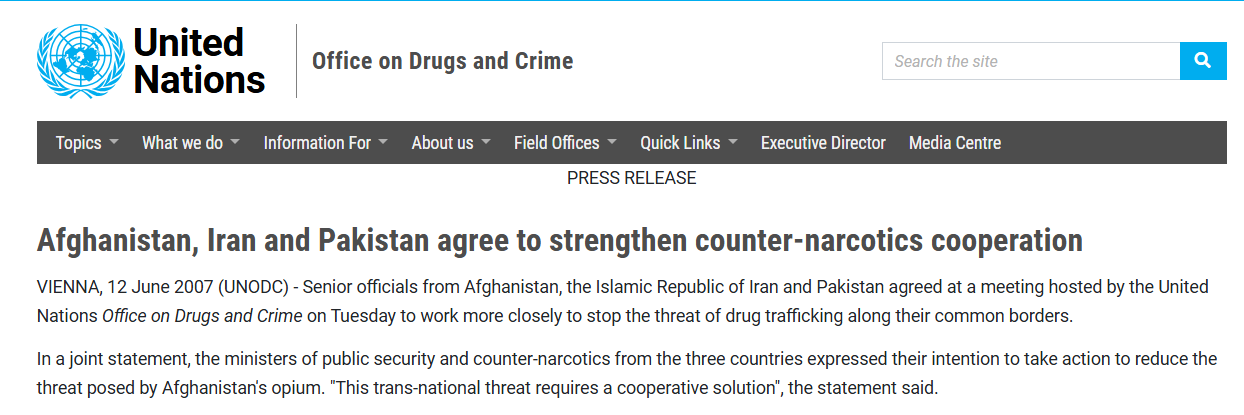
Source: UN
Pakistan has constructed a fortified fence along 2,600 km of its border since 2017, specifically to prevent the passage of “terrorism, arms, and drug trafficking. ” The border is now covered by more than 1,200 new forts and observation posts equipped with cameras and drones. Security troops regularly intercept smuggling convoys, and the Pakistan Anti-Narcotics Force claims a record number of heroin and opium seizures in recent years. Drug labs and militant sanctuaries have also been major targets of significant military operations such as Zarb- e- Azb (2014) and Radd- ul- Fasaad (2017). A new law even denies narcotics profits to terrorist leaders and their relatives. Pakistani authorities cite UNODC and other reports indicating the connection between Afghan poppy fields and global heroin flow as a justification for their policies.
Conclusion
Pakistan maintains that the narcotics threat is external, with Afghan opiates and the militants they fund responsible for violence in Pakistan. The fact that officials label groups such as the TTP as the Fitna al-Khawarij indicates that these groups misuse Islamic teachings to conceal their atrocities. Overall, the “narco-warlords” along the Durand Line are militant networks and drug clans established along the Afghan border, and Islamabad’s response has been to seal its border, tighten security, and target these illegal funds. Analysts say that border fences and raids alone won’t fully dismantle the narco-terror nexus unless Afghanistan is addressed, since it remains the center of poppy cultivation. Pakistan believes that only by exerting international pressure on Afghanistan’s opium sources and implementing countermeasures can it effectively combat the cross-border opium insurgency.

